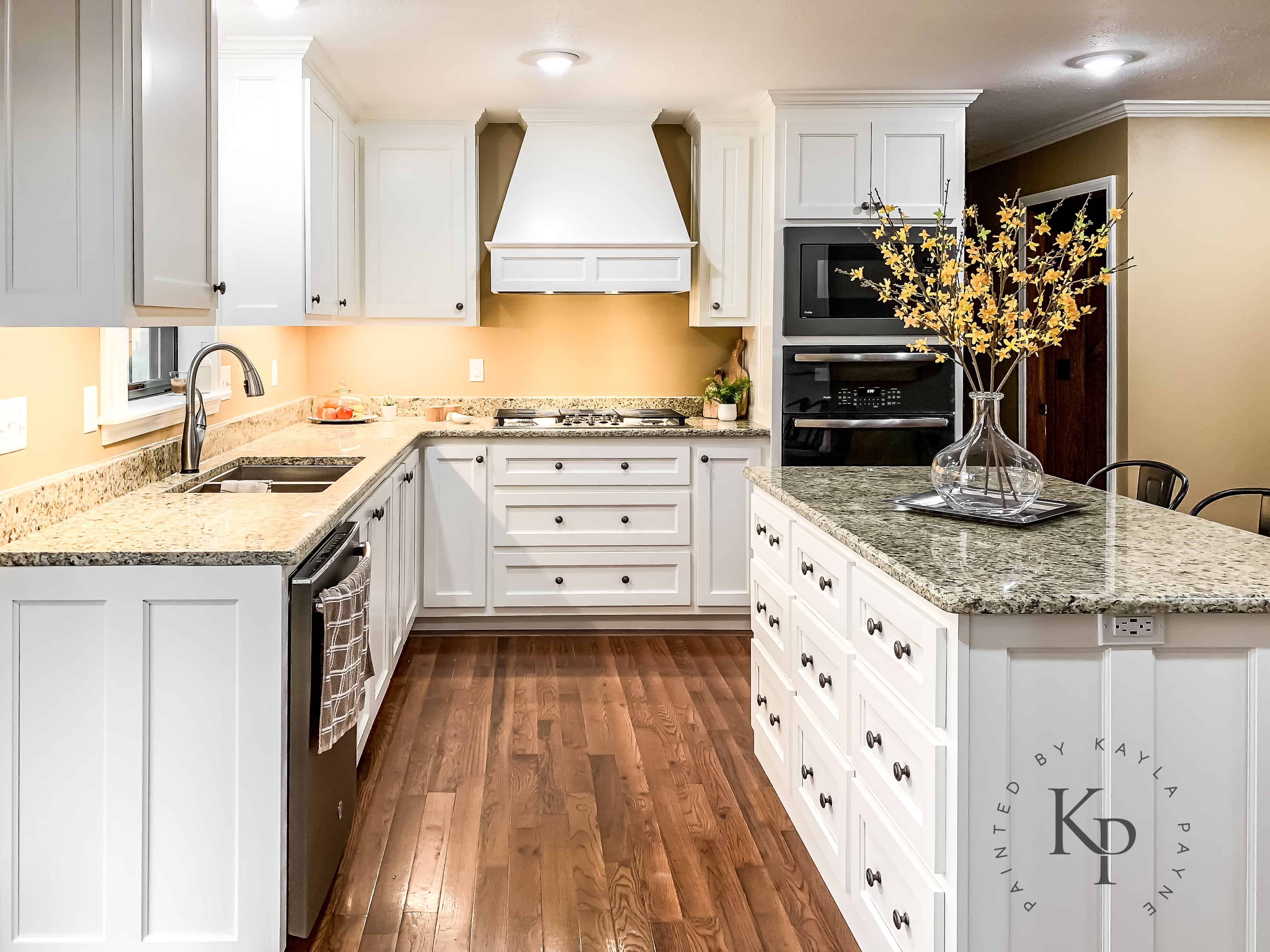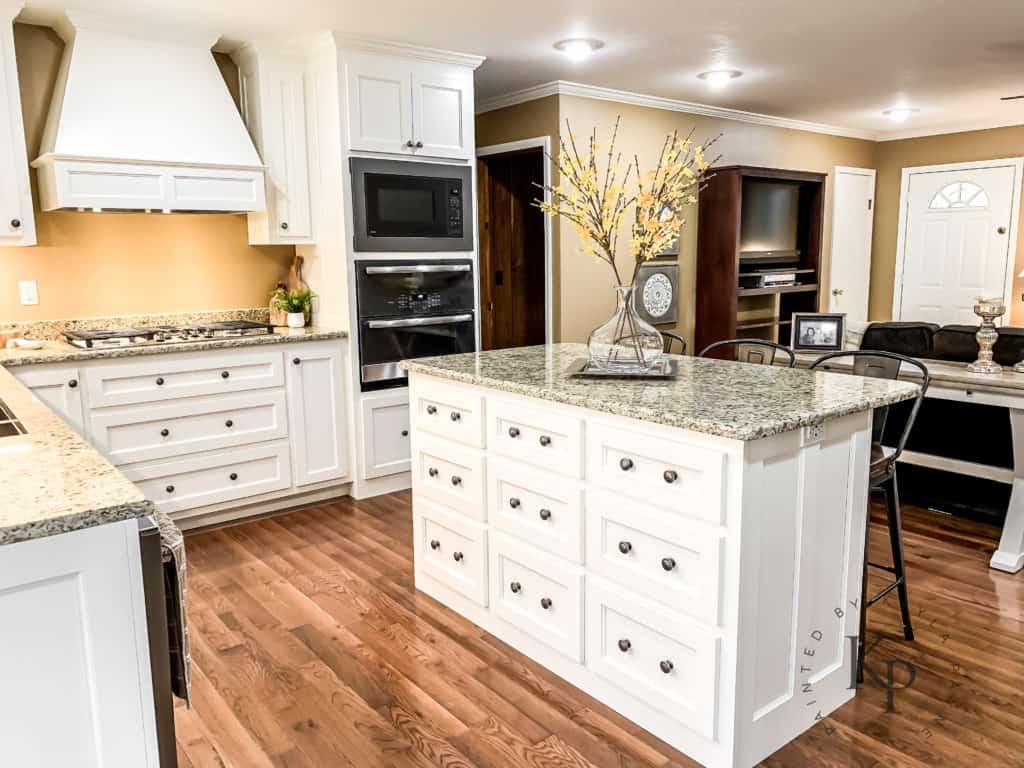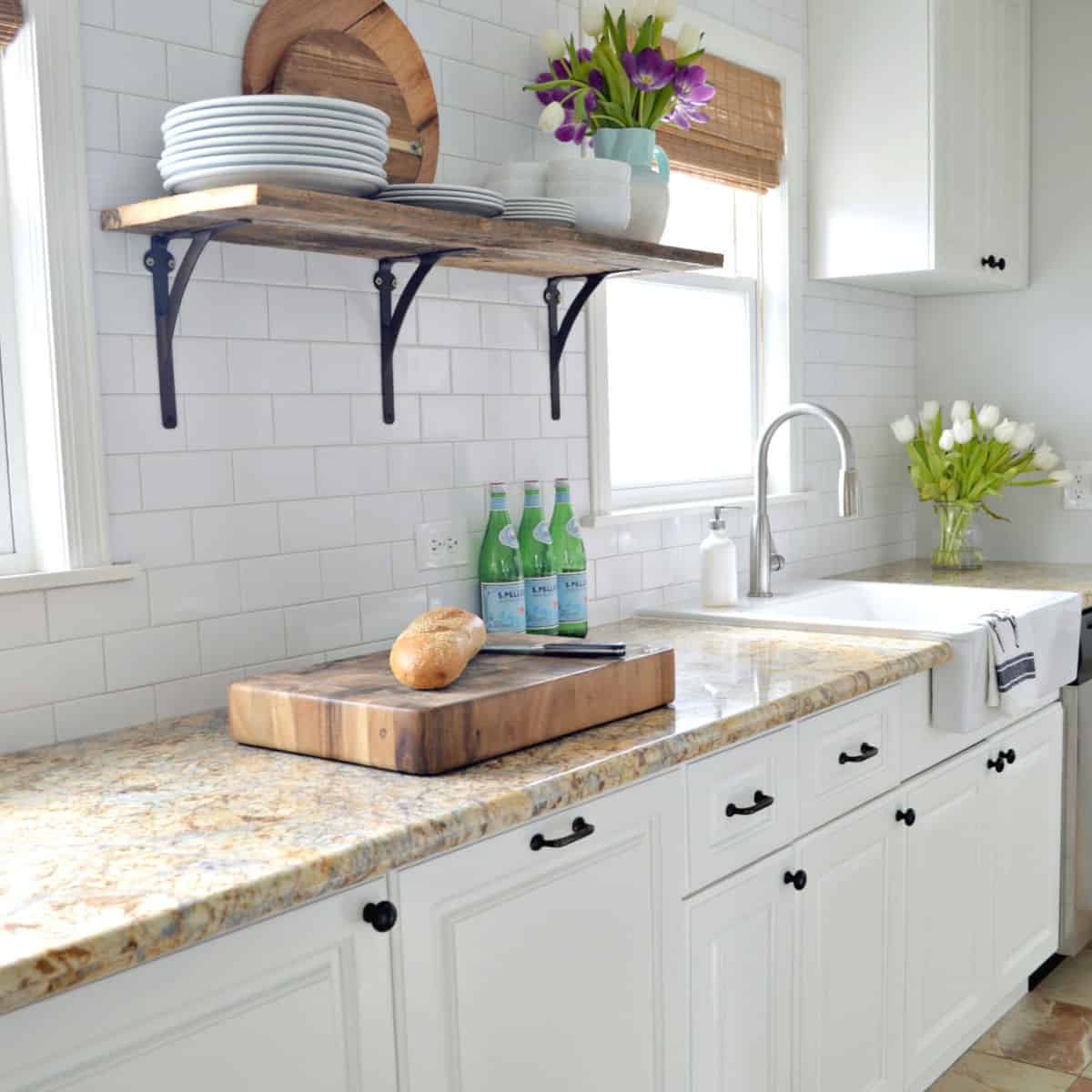Understanding White Kitchen Cabinets and Wall Paint

White kitchen cabinets are a popular choice for homeowners because they create a clean, bright, and airy atmosphere. They can be easily incorporated into various kitchen designs, from traditional to modern, and offer a versatile backdrop for showcasing other design elements.
Impact of White Kitchen Cabinets on Kitchen Design
White kitchen cabinets have a significant impact on the overall design of a kitchen. They create a sense of spaciousness, especially in smaller kitchens. White reflects light, making the space feel brighter and more inviting. They also provide a neutral canvas that allows homeowners to experiment with different colors and textures in other areas of the kitchen, such as the backsplash, countertops, and accessories.
Styles of White Kitchen Cabinets and Corresponding Wall Paint Choices, Wall paint for white kitchen cabinets
The style of white kitchen cabinets influences the best wall paint choices.
Traditional White Kitchen Cabinets
Traditional white kitchen cabinets often feature intricate details, such as raised panels or beadboard doors. They typically pair well with warm, neutral wall colors like:
- Cream
- Beige
- Light Gray
- Soft Yellow
These colors complement the classic aesthetic of traditional cabinets and create a cozy and inviting atmosphere.
Modern White Kitchen Cabinets
Modern white kitchen cabinets often feature sleek lines, minimalist details, and a focus on functionality. They pair well with bold and contemporary wall colors, such as:
- Charcoal Gray
- Deep Navy Blue
- Sage Green
- Black
These colors create a dramatic and sophisticated backdrop for modern cabinets and enhance the minimalist aesthetic.
Contemporary White Kitchen Cabinets
Contemporary white kitchen cabinets bridge the gap between traditional and modern styles. They often feature clean lines, subtle details, and a focus on functionality. They pair well with a range of wall colors, including:
- Light Gray
- Soft Blue
- Pale Pink
- Taupe
These colors complement the versatility of contemporary cabinets and create a balanced and sophisticated atmosphere.
Key Factors to Consider When Choosing Wall Paint for White Kitchen Cabinets
When choosing wall paint for white kitchen cabinets, consider the following factors:
- Natural Light: The amount of natural light in the kitchen influences the perceived color of the wall paint. Kitchens with ample natural light can handle darker and bolder colors, while kitchens with limited natural light may benefit from lighter and brighter colors.
- Kitchen Size: The size of the kitchen impacts the choice of wall paint color. Smaller kitchens may benefit from lighter colors that create a sense of spaciousness, while larger kitchens can handle darker and more dramatic colors.
- Personal Style: Ultimately, the choice of wall paint color should reflect the homeowner’s personal style and preferences.
Color Palette Considerations: Wall Paint For White Kitchen Cabinets

Choosing the right wall paint color for your white kitchen cabinets is a crucial step in creating a cohesive and visually appealing space. It’s an opportunity to express your personal style and enhance the overall ambiance of your kitchen. This section will guide you through the process of selecting complementary wall colors that will elevate your kitchen’s design.
Complementary Wall Colors for White Cabinets
The beauty of white kitchen cabinets lies in their versatility. They provide a blank canvas that allows you to explore a wide range of color palettes. Consider the following factors when choosing wall paint colors:
- Natural Light: Assess the amount of natural light your kitchen receives. Rooms with abundant natural light can handle bolder colors, while kitchens with less natural light might benefit from lighter, more reflective shades.
- Kitchen Style: The overall style of your kitchen will influence your color choices. A modern kitchen might favor sleek, monochromatic palettes, while a farmhouse kitchen could embrace warm, earthy tones.
- Personal Preference: Ultimately, the most important factor is your personal taste. Choose colors that you find calming and inspiring, creating a space that reflects your personality and style.
Color Palette Options for White Cabinets
Here’s a breakdown of various color palettes that work well with white kitchen cabinets, showcasing the mood and atmosphere they create:
| Color Palette | Description | Examples | Mood/Atmosphere |
|---|---|---|---|
| Neutral Palette | This classic palette utilizes shades of white, gray, and beige, creating a timeless and sophisticated look. | White cabinets with a light gray wall, or white cabinets with a warm beige wall. | Calm, serene, and elegant. |
| Cool Palette | This palette incorporates blues, greens, and grays, evoking a sense of tranquility and freshness. | White cabinets with a soft blue wall, or white cabinets with a sage green wall. | Relaxing, airy, and refreshing. |
| Warm Palette | This palette features yellows, oranges, and reds, bringing warmth and vibrancy to the kitchen. | White cabinets with a sunny yellow wall, or white cabinets with a terracotta orange wall. | Inviting, energetic, and cheerful. |
| Accent Palette | This palette uses a bold accent color against a neutral backdrop, adding a pop of personality to the kitchen. | White cabinets with a black accent wall, or white cabinets with a bright turquoise accent wall. | Dramatic, eye-catching, and stylish. |
Practical Considerations

When choosing wall paint for your kitchen cabinets, it’s crucial to go beyond just color and consider practical aspects that will enhance both the look and functionality of your space. These considerations will ensure your kitchen not only looks stunning but also remains practical and easy to maintain for years to come.
Lighting and Natural Light
The impact of lighting on the perceived color of your wall paint is significant. Natural light can make a space feel brighter and more inviting, while artificial light can cast a different hue on the walls. Consider the amount of natural light your kitchen receives throughout the day. If your kitchen has ample natural light, you can opt for a slightly cooler or warmer white, as the light will balance out any potential yellowing or blueing. However, if your kitchen receives limited natural light, you might want to choose a warmer white to create a more welcoming and inviting atmosphere.
Paint Finish
The finish of your wall paint plays a crucial role in the overall aesthetic and functionality of your kitchen. Here’s a breakdown of the most common finishes and their impact:
- Matte Finish: Matte finishes provide a flat, non-reflective surface, making them ideal for hiding imperfections in the walls. They are often chosen for a more traditional and sophisticated look, but they can be more prone to staining and are more difficult to clean.
- Satin Finish: Satin finishes offer a subtle sheen that adds a touch of elegance without being overly glossy. They are more durable than matte finishes and are easier to clean, making them a popular choice for kitchens. Satin finishes are also good at hiding minor imperfections.
- Semi-Gloss Finish: Semi-gloss finishes offer a higher sheen than satin finishes, providing a more reflective surface. They are extremely durable, easy to clean, and resistant to stains. This makes them ideal for high-traffic areas like kitchens, especially those with young children or pets.
Durability and Cleanability
Your kitchen is a high-traffic area, and it’s essential to choose a wall paint that can withstand the constant wear and tear. Here are some practical tips for choosing a durable and easy-to-clean wall paint:
- Choose a Paint with a High Sheen: As mentioned earlier, semi-gloss and satin finishes are more durable and easier to clean than matte finishes. They are also more resistant to stains and scratches.
- Consider a Stain-Resistant Paint: Many paint manufacturers offer stain-resistant paints specifically designed for high-traffic areas. These paints are formulated with special additives that make them more resistant to spills, grease, and other stains.
- Use a Primer: Applying a primer before painting can create a smooth, even surface that will help the paint adhere better and make it more durable. A primer also helps to seal the walls and prevent stains from bleeding through the paint.
Wall paint for white kitchen cabinets – Choosing the perfect wall paint for your white kitchen cabinets is like finding the right shade of lipstick – it can make or break your look. But don’t get so caught up in the details that you forget about the practicalities! You might want to consider a light color that won’t show every smudge and splattering, especially if you’re prone to culinary mishaps (like me, who once accidentally painted the wall with a rogue spatula).
Speaking of practicalities, have you thought about installing a medicine cabinet? It’s a great way to keep your bathroom organized, and you can find a detailed guide on hanging medicine cabinet on wall. Now, back to the cabinets – remember, you want a color that complements the white, not clashes with it.
After all, you don’t want your kitchen to look like a dentist’s office!
Choosing the right wall paint for white kitchen cabinets can be a real head-scratcher. Do you go bold and daring? Or do you play it safe with a classic white? If you’re leaning towards the latter, you might want to check out this white walls white cabinets kitchen design guide for some inspiration.
Just remember, even with white on white, you still have a ton of options when it comes to shades and finishes, so don’t be afraid to get creative!
